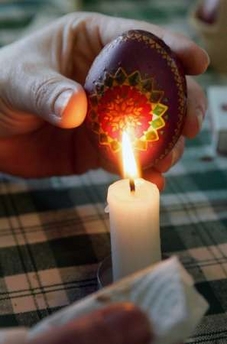The
myths and traditions of Easter Eggs comes to current day lore from an
incredibly distant past that has shown man's relationship
with the egg to be a very deep seated one. This is
caught in old Latin proverb: Omne vivum ex ovo ("all life comes from an egg")
Eggs were said to be dyed and eaten at the spring festivals in
ancient Egypt, Persia, Greece, and Rome. The Persians of that time
gave eggs as gifts at the vernal equinox. But it is not
very clear how those colored eggs have come in to dominate
the Eastern countries.
It is speculated that it
was introduced in Europe, or, rather Western Europe,
during the course of the fifteenth century. This was when
missionaries or knights of the Crusades are thought to
have brought in the concept of the coloring of eggs
westwards. In Medieval times they were given to servants,
In Medieval times they were given to servants,
while in Germany, they were passed to children. Christians of
the Near East adopted the Easter egg tradition, making it a
religous symbol representative of the tomb from which Christ
broke forth. Often colored red, the Easter eggs were symbolic of
Christ's blood, which gave all believers a share in Jesus' new
life.





